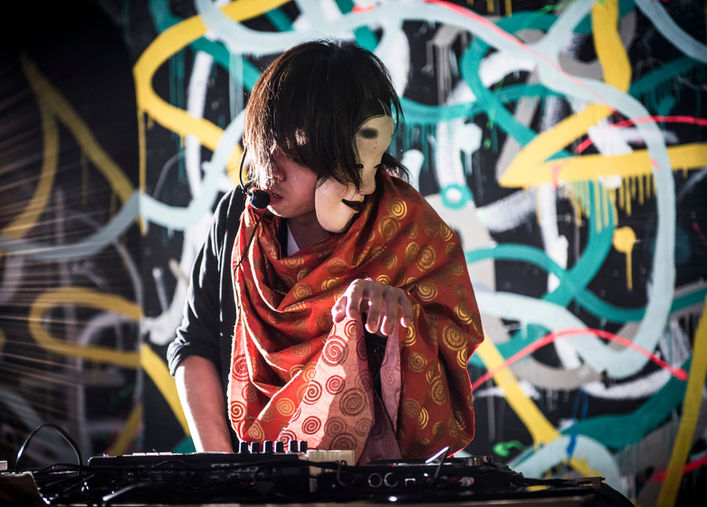About
Hiroshi Mehata is Visual /Sound artist in Tokyo Japan.
Mehata focus on elucidating the structure of "impressions" that are always follow when people perceive objects and from which we can never erase.
The Factors that have created a sense for perceiving “the atmosphere” that invisible by under the unconscious (what is known as "Kami", "Kegare ", or "Kotodama", etc. ) what has been formed Japanese history, spirituality and cultural formation, and The infinite chain of "Image" that are included to all things that create the human memory is represented as a symbol pattern/noise sound in his concept called Noum.
Released as Mehata Sentimental Legend with music album Noum Zeccyou from Germany's netlabel Mind Plug Records in 2011.
In 2013, had a first solo exhibition as a visual artist, Mehata Hiroshi- Noum Zeccyou at Gallery TEXU in Spain.
In recent years, Mehata has also shown in Portugal, Italy, Indonesia, Tunisia, Australia, and Japan.
Solo Exhibitions, “Mehata Hiroshi Meets Abantal Restaurante(Seville, Spain, 2014) was framed as a part of 2013-2014 Japan-Spain 400th Anniversary”,
“NOUM AMATARA/El Viajero Alado(Jerez, Spain, 2016)” etc.
2023, held a solo exhibition "The Color Cleanser" in Jogjakarta. Indonesia.
Other selected, “Concorso arte Milano 2016 (Milano, Italy, 2016)” ,“la 3ème Session des Journées Méditerranéennes des Arts Visuels à Hammamet(Hammamet, Tunisia 2016)”“Kameyama Art Triennale(Mie,Jp,2017)”, “Makassar Biennale (Makassar, Indonesia, 2019)” "YICCA Prise 21-22/ 18 finalist (Milan, Italy, 2022)" ,etc.
In the music activities,
appeared on the music channel “Atmósfera” in RNE Radio3 (Spain,2014).
had solo music tour “Noum El Final de mundo”. (Cadiz, Spain 2015), etc.
In 2019, under the "Chicago Obihiro Exchange Project presented by Asian Improv aRts Midwest",
Recorded and performed with authentic Avant-garde jazz musicians in Chicago, USA.
2022, “ChicagObihiro” released from Asian Improv Midwest (Chicago, USA)
Not only solo activities, but Mehata also had several music bands and collaborations with a lot of musicians.
From 2012 to 2021, he was in a band called GAIAMAMOO. They had performed at Festival such as “Mixology Festival (NYC,US 2018)”, ”End Tymes 7(NYC, US, 2017)”"XFest(Boston, US, 2018)","Festes Majors Alternatives de Vallcarca(Barcelona, Spain, 2017)".
Link: Biography

